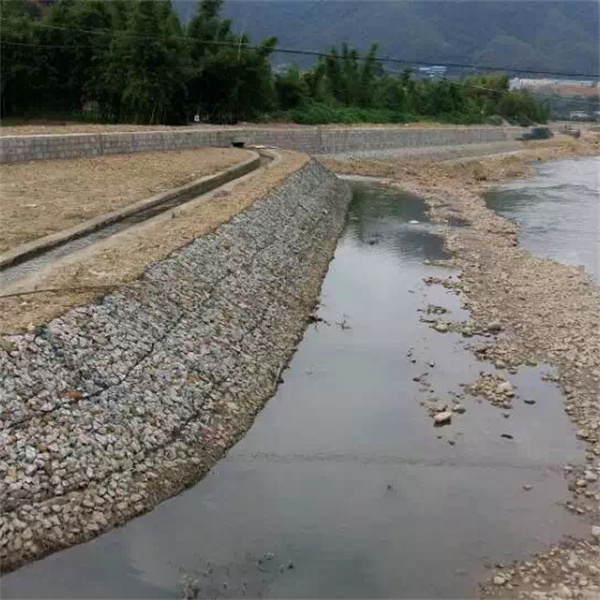Dec . 04, 2024 08:19 Back to list
Suppliers of Gabion Fill Materials for Effective Erosion Control Solutions
Exploring Gabion Fill Material Suppliers An Essential Component for Modern Construction
Gabions, a term derived from the Italian word gabbione, meaning big cage, have become increasingly popular in construction and landscaping projects. These wire mesh cages are often filled with rock, concrete, or other fill materials, providing structural and aesthetic benefits to various applications. As the demand for gabions continues to rise, so does the need for reliable gabion fill material suppliers. This article delves into the importance of selecting the right suppliers, the types of fill materials available, and the benefits of using gabions in construction.
The Role of Gabion Fill Material Suppliers
Gabion fill material suppliers play a critical role in the construction industry by providing the necessary materials for building strong, durable, and aesthetically pleasing structures. These suppliers specialize in various fill materials, such as natural stones, recycled materials, and concrete aggregates, each offering unique properties and advantages.
When selecting a gabion fill material supplier, it is essential to consider factors such as product quality, delivery capabilities, pricing, and customer service. A reliable supplier will ensure that the fill materials meet industry standards and specifications, contributing to the safety and longevity of the constructed structures. Moreover, a reputable supplier will provide guidance on the best fill materials for specific projects, helping contractors make informed decisions.
Types of Gabion Fill Materials
1. Natural Stone Natural stone is the most commonly used fill material for gabions. It comes in various sizes and colors, allowing for creative design options. Gravel, river rocks, and boulders can be used, depending on the desired aesthetic and structural requirements. Natural stone offers excellent drainage, making it ideal for applications in retaining walls and erosion control.
2. Recycled Materials With the growing emphasis on sustainability, many contractors are opting for recycled materials as gabion fill. Recycled concrete aggregate (RCA) and crushed bricks are popular choices, offering the same structural benefits as natural stone while reducing waste and environmental impact. Using recycled materials not only supports eco-friendly building practices but can also reduce material costs.
gabion fill material suppliers

3. Concrete Blocks In some applications, concrete blocks or precast concrete elements are used as gabion fill materials. This option provides a uniform appearance and can be designed to fit specific structural requirements. Concrete fills can increase the weight of the gabion structure, providing greater stability in applications such as flood control or crash barriers.
4. Geosynthetic Fill For specialized projects, geosynthetic materials can be used in conjunction with traditional fill materials. These synthetic products, such as geogrids and geotextiles, enhance the performance of gabions by improving drainage, soil stabilization, and erosion control.
Benefits of Using Gabions
Gabions offer numerous advantages in construction and landscape design. One of the primary benefits is their strength and durability. When properly filled and constructed, gabions can withstand harsh weather conditions and heavy loads, making them ideal for retaining walls, riverbank stabilization, and erosion control.
Additionally, gabions are highly versatile. They can be used in a variety of applications, from civil engineering projects to decorative landscaping. Architects and designers appreciate the aesthetic appeal of gabions, as they can blend seamlessly into natural surroundings while providing functional benefits.
Furthermore, gabions promote environmental sustainability. They allow for natural drainage, reducing water runoff and encouraging vegetation growth. By using fill materials that are locally sourced or recycled, the environmental impact of construction projects can be significantly minimized.
Conclusion
In conclusion, the role of gabion fill material suppliers is vital in the construction and landscaping sectors. By understanding the types of available fill materials and the benefits of gabions, contractors can make informed decisions for their projects. Reliable suppliers ensure the quality and appropriateness of materials, ultimately contributing to the success and sustainability of modern construction practices. As we continue to embrace eco-friendly solutions, gabions and their fill materials are poised to remain an essential component of the construction landscape.
-
HESCO Gabion Baskets for Coastal Erosion Prevention
NewsAug.22,2025
-
Longevity and Durability of River Rock Gabion Walls
NewsAug.22,2025
-
How to Integrate Gabion 3D Walls in Urban Planning
NewsAug.22,2025
-
Reno Mattress Gabion Applications in Civil Engineering
NewsAug.22,2025
-
How to Install Wire Mesh for Gabion Baskets Properly
NewsAug.22,2025
-
Best Materials for Filling a Chain Link Gabion
NewsAug.22,2025
-
Wire Mesh Thickness Impact on Gabion Wall Load Bearing
NewsAug.12,2025






